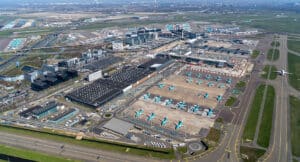Getting a Fix on Next-Generation RTLS with 5G
As amazing as an entirely new, standalone invention may be, I am partial to how innovation can happen at the crossroads of technologies that may not be new, but in combination hit entirely new strides. One great example is in an area called Real Time Location Systems As niche as this may sound, its applications are wide open and thoroughly exciting but particularly in the context of 5G. Let me explain.
In the rapidly evolving world of Process Automation – think modern, smart manufacturing, robotics, Tesla factories, that kind of thing – the complex choreography of systems, devices and machines requires precise knowledge of the location of any given entity in order to synchronize actions. If the weather was always perfect, and there was no crime, that same factory could make that magic using GPS satellites the same way they do tracking and synchronizing container traffic in open air ports. Outdoors, RTLS is relatively easy.
Tunnel Vision
Indoors it’s quite another story. As we all may have experienced, at least those of us who drive, all bets are off once we descend into a tunnel. Satellites don’t play there so, we need something else to feed the dance, and there are many different ways of providing positioning information. Additionally, different applications require different levels of accuracy. Let’s a take quick look at how RTLS works, “traditionally”, if that’s not too ridiculous a way to describe something so new.
Real Time Locating Systems (RTLS), also known as real-time tracking systems, are used to automatically identify and track the location of objects or people in real time, usually within a building or other contained area. Wireless RTLS tags that may be attached to objects or worn by people will receive wireless signals from tags to determine their location. In most cases RTLS involves fixed reference points.
We’ve already cited a few examples of real-time locating systems and there are many. From tracking automobiles through an assembly line to locating pallets of merchandise in a warehouse to finding medical equipment in a hospital – if an operation has many, literally moving parts RTLS is a top line requirement. In most cases, the physical layer of RTLS technology is radio frequency (RF) communication, while other systems may use optical (usually infrared) LiDAR or acoustic (usually ultrasound) technology with, or in place of, RF. Once the location-sensitive objects in an operation are identified, whatever they might be, RTLS tags can be added to them. These can be mobile and fixed reference points, and may be transmitters, receivers, or both, resulting in numerous possible technology combinations.
But the tags are one thing. Like RFID tags, they are passive and are not expected to do anything but send, bounce and receive. The Locators, or the intelligent edge devices that find the tags are a different story. These need to be connected to the network most commonly via Ethernet cabling and as such generally will be installed in a specific location for their entire service life. It perhaps goes without saying that these required strings make the puppetry of any RTLS system a costly and labour-intensive proposition. The location of each Locator is essential to functional performance, and every indoor space presents its own unique constraints. This challenge is described well in a recent whitepaper from world leading indoor RTLS innovator and Cumucore partner, Finland’s own, Quuppa.
“In a typical network infrastructure, the Quuppa Locators are connected to the network using Ethernet cables. Ethernet cables are ideal for the purpose as they can provide both power and Ethernet connectivity to the Locators when connected using a PoE switch. In the vast majority of use cases, especially for indoor deployments, a cabled infrastructure is recommended as it’s the most convenient and sometimes even the most cost-effective option once total costs are considered.
In some use cases, one option to extend the connectivity of the system beyond the Ethernet cable coverage could be to use a WiFi mesh, bridge or a cellular uplink. For example, for outdoor deployments, where Locators cannot be mounted to the exteriors of existing buildings, it may be impractical and expensive to run Ethernet cables to structures where the outdoor Locators can be mounted.
At Quuppa, we recognise the costs associated with deploying the infrastructure required to take the Quuppa system into use. This white paper has touched on the current proven methods for keeping these costs to a minimum but we are also continuously on the lookout for any existing or new technologies that would make it even easier and less expensive to implement our technology. “
Look no further, Quuppa.
But indeed, our collaboration with them resolves precisely this problem and is the crux of this article. Simply put, Non-Public Network (NPN) are the perfect solution to providing faster, more flexible, lower total cost RTLS because we can remove Ethernet cables from the equation. NPNs have 5GLAN features that enables Locators to be part of the fixed Ethernet infrastructure used today. We can thus provide optimal synchronization to devices using the same Time-Sensitive Networking protocols as do the physical Ethernet networks. This means that when we can have the same location and synchronization functionality indoors that we have outdoors using GPS. In a nutshell, we’re talking zero compromise with massive upside on performance and flexibility.
But wait, there’s more!
And that’s not all. Because some of the NPN network traffic can be terminated on-premise, thus ensuring that sensitive location information is secured and managed locally. Here we see how local traffic termination provides both latency control and transmission cost benefits along with iron-clad on prem security. And once an NPN-outfitted factory or plant comes online, the very same network goes beyond RTLS to provide UE, IoT, mmTC (you name it) connectivity without being afraid of congestion problems thanks to the 5G NPN’s Network Slicing functionality.







